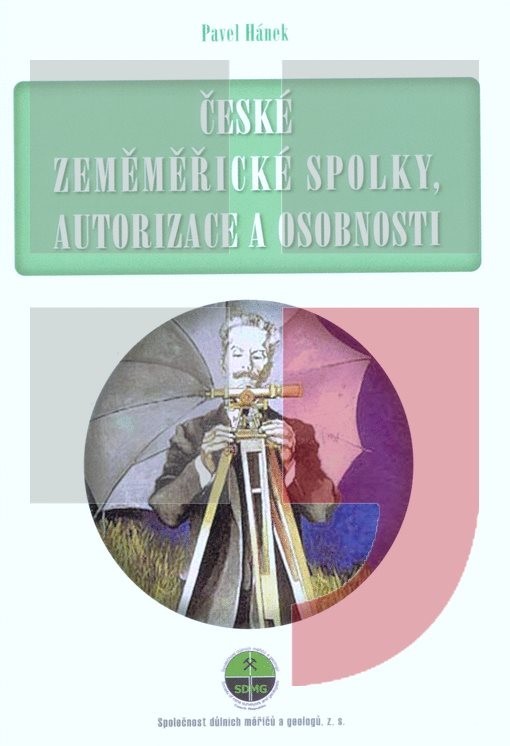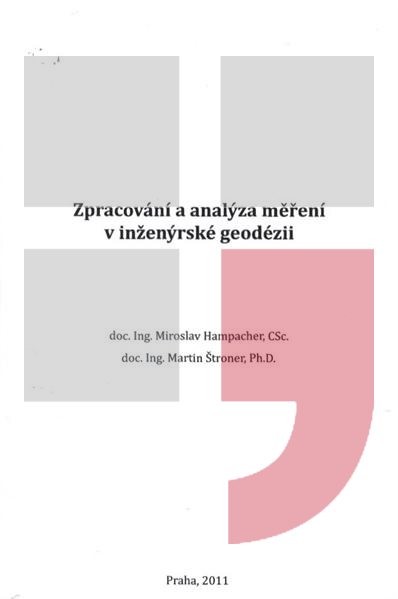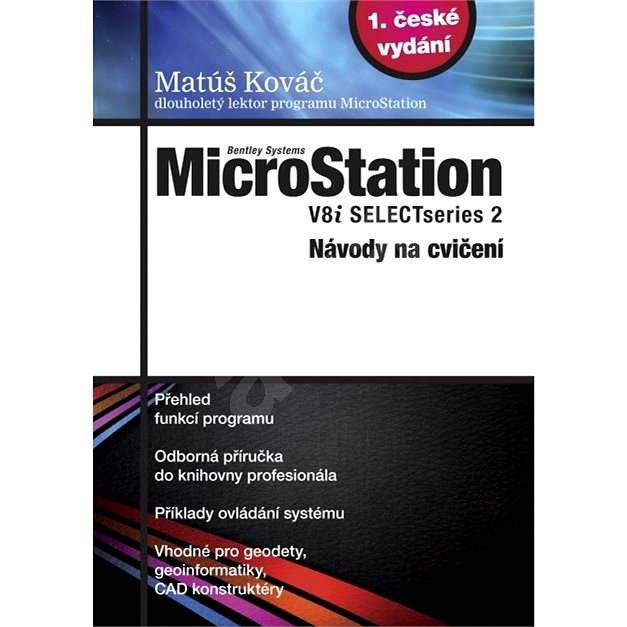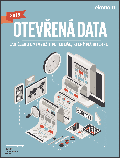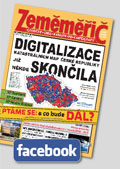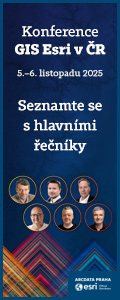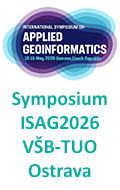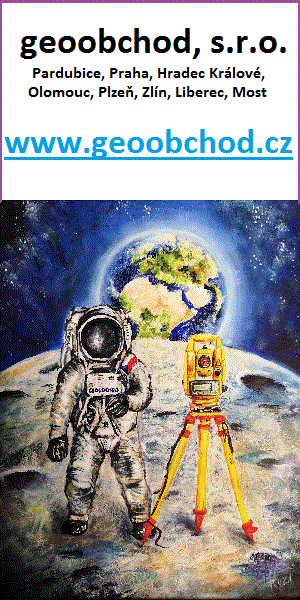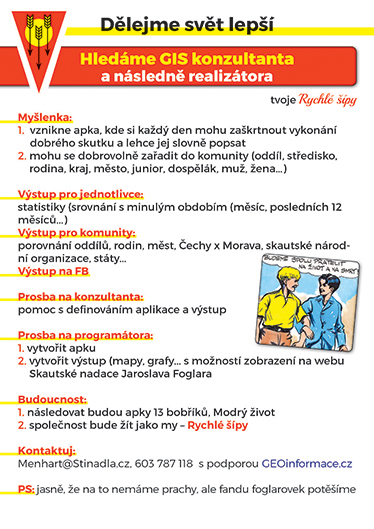zprávy
zdroje zpráv:Oznámení o částečném omezení provozu na Pobočce Nymburk
1.6.2017 0:00 Státní pozemkový úřad Z důvodu plánovaného přerušení dodávky elektřiny bude v úterý 13. 6. 2017 částečně omezen provoz Pobočky Nymburk (KPÚ pro Středočeský kraj a hl.m. Praha).Galileo signal team nominated for invention award
31.5.2017 17:05 ESA Navigation
The engineering team behind the signal technology underpinning Europe’s Galileo satellite navigation system has reached the final of this year’s European Inventor Award.
Galileo signal team nominated for invention award
31.5.2017 17:05 ESA Navigation
The engineering team behind the signal technology underpinning Europe’s Galileo satellite navigation system has reached the final of this year’s European Inventor Award, run by the European Patent Office.
odborný referent / vrchní referent – informatik Katastrálního pracoviště Valašské Meziříčí
31.5.2017 15:46 ČÚZK /Urady/Katastralni-urady/Katastralni-urady/Katastralni-urad-pro-Zlinsky-kraj/Uredni-deska/Oznameni-a-jina-uredni-sdeleni/Volna-mista/odborny-referent-vrchni-referent-–-informatik-Kataodborný referent / vrchní referent – informatik Katastrálního pracoviště Valašské Meziříčí
31.5.2017 15:46 ČÚZK - předpisy a opatření Katastrální úřad pro Zlínský kraj Katastrální pracoviště Valašské Meziříčívypisuje výběrové řízení na místo
odborný referent / vrchní referent – informatik Katastrálního pracoviště Valašské Meziříčí
odborný referent / vrchní referent – informatik Katastrálního pracoviště Valašské Meziříčí
31.5.2017 15:46 ČÚZK - volná místa Katastrální úřad pro Zlínský kraj, Katastrální pracoviště Valašské Meziříčí vypisuje výběrové řízení na místo odborný referent / vrchní referent – informatik Katastrálního pracoviště Valašské MeziříčíObnova katastrálního operátu novým mapováním v k. ú. Kamenický Šenov
31.5.2017 15:36 ČÚZK - předpisy a opatřeníKatastrální úřad pro Liberecký kraj, Katastrální pracoviště Česká Lípa sděluje, že v katastrálním území Kamenický Šenov bude katastrální operát obnoven novým mapováním. Vlastníkům nemovitostí a oprávněným z jiného práva zapisovaného do katastru nemovitostí v uvedené souvislosti vyplývají povinnosti stanovené katastrálním zákonem. Podrobnosti viz úřední deska.
Obnova katastrálního operátu novým mapováním v k. ú. Kamenický Šenov
31.5.2017 15:36 ČÚZK /Urady/Katastralni-urady/Katastralni-urady/Katastralni-urad-pro-Liberecky-kraj/Katastralni-pracoviste/KP-Ceska-Lipa/O-uradu/Aktuality/Obnova-katastralniho-operatu-novym-mapovanim-v-k-uOdborný referent/vrchní referent v oddělení dokumentace KN
31.5.2017 14:24 ČÚZK /Urady/Katastralni-urady/Katastralni-urady/Katastralni-urad-pro-Jihomoravsky-kraj/Uredni-deska/Oznameni-a-jina-uredni-sdeleni/Volna-mista/Odborny-referent-vrchni-referent-v-oddeleni-do-(2)Odborný referent/vrchní referent v oddělení dokumentace KN
31.5.2017 14:24 ČÚZK - předpisy a opatření Katastrální úřad pro Jihomoravský kraj Katastrální pracoviště Znojmovypisuje výběrové řízení na místo
Odborný referent/vrchní referent v oddělení dokumentace KN
Odborný referent/vrchní referent v oddělení dokumentace KN
31.5.2017 14:24 ČÚZK - volná místa Katastrální úřad pro Jihomoravský kraj, Katastrální pracoviště Znojmo vypisuje výběrové řízení na místo Odborný referent/vrchní referent v oddělení dokumentace KNOdborný referent v oddělení právních vztahů k nemovitostem
31.5.2017 14:22 ČÚZK - předpisy a opatření Katastrální úřad pro Jihomoravský kraj Katastrální pracoviště Znojmovypisuje výběrové řízení na místo
Odborný referent v oddělení právních vztahů k nemovitostem
Odborný referent v oddělení právních vztahů k nemovitostem
31.5.2017 14:22 ČÚZK - volná místa Katastrální úřad pro Jihomoravský kraj, Katastrální pracoviště Znojmo vypisuje výběrové řízení na místo Odborný referent v oddělení právních vztahů k nemovitostemOdborný referent v oddělení právních vztahů k nemovitostem
31.5.2017 14:22 ČÚZK /Urady/Katastralni-urady/Katastralni-urady/Katastralni-urad-pro-Jihomoravsky-kraj/Uredni-deska/Oznameni-a-jina-uredni-sdeleni/Volna-mista/Odborny-referent-v-oddeleni-pravnich-vztahu-k-(2)Aktivity Horizont HG 2014 v letošním roce
31.5.2017 13:01 HrdličkaV rámci projektu Svatá Ludmila 1100 let, jehož cílem je připomenout si a oslavit svatou Ludmilu a její neopominutelnou roli v českých i evropských dějinách, se v letošním roce Horizont HG 2014 snaží navázat spolupráci s USA v oblasti rozšiřování tzv. svatoludmilských míst. Takto jsou označována místa, na kterých samotná Ludmila osobně pobývala a místa, která na její počest... View Article
The post Aktivity Horizont HG 2014 v letošním roce appeared first on HRDLIČKA spol. s r.o. - komplexní služby v oblasti geodézie.
Rada/odborný rada – rozhodování o povolení vkladu v právním oddělení Katastrálního pracoviště České
31.5.2017 12:28 ČÚZK - volná místa Katastrální úřad pro Jihočeský kraj, Katastrální pracoviště České Budějovice vypisuje výběrové řízení na místo Rada/odborný rada – rozhodování o povolení vkladu v právním oddělení Katastrálního pracoviště ČeskéRada/odborný rada – rozhodování o povolení vkladu v právním oddělení Katastrálního pracoviště České
31.5.2017 12:28 ČÚZK - předpisy a opatření Katastrální úřad pro Jihočeský kraj Katastrální pracoviště České Budějovicevypisuje výběrové řízení na místo
Rada/odborný rada – rozhodování o povolení vkladu v právním oddělení Katastrálního pracoviště České Budějovice
Rada/odborný rada – rozhodování o povolení vkladu v právním oddělení Katastrálního pracoviště České
31.5.2017 12:28 ČÚZK /Urady/Katastralni-urady/Katastralni-urady/Katastralni-urad-pro-Jihocesky-kraj/Volna-mista/Rada-odborny-rada-–-rozhodovani-o-povoleni-vkladuV mapové aplikaci Investiční a
31.5.2017 12:00 Jihočeský kraj V mapové aplikaci Investiční akce 2017 (https://gisportal.kraj-jihocesky.gov.cz/arcgis/apps/webappviewer/index.html?id=466a55ed842b4e438b4c6c09a96c4ea1) byly doplněny informace k uzavírkám mostu ev.č. 140-012 u Ražic a silnic II/425 Pamětice, III/14514 Stachy - Zadov a III/12110 Cerhonice - Dolní Ostrovec.V mapové aplikaci Investiční a
31.5.2017 12:00 Jihočeský kraj V mapové aplikaci Investiční akce 2017 byly doplněny informace k uzavírkám mostu ev.č. 140-012 u Ražic a silnic II/425 Pamětice, III/14514 Stachy - Zadov a III/12110 Cerhonice - Dolní Ostrovec.Od pátku 2. 6. 2017 14:30 do p
31.5.2017 12:00 Plzeňský kraj Od pátku 2. 6. 2017 14:30 do pondělí 5. 6. 2017 cca 6:00 bude prováděna pravidelná údržba serverů Technologického centra Plzeňského kraje. V této době bude docházet k odstávkám jednotlivých služeb a aplikací. Děkujeme za pochopení.Nové systémy družicové komunikace získají letenku do vesmíru skrze program ESA Pioneer
31.5.2017 11:32 Český Kosmický PortálDíky partnerskému programu ESA Pioneer jsou nyní k dispozici rychlé a cenově dostupné možnosti demonstrace technologií a služeb satelitní komunikace přímo na oběžné dráze.
Zveřejněna výzva Rámcového projektu ESA pro podporu českého průmyslu
31.5.2017 10:55 Český Kosmický PortálDne 31. 5. 2017 byla zveřejněna výzva pro podávání návrhů projektů v rámci Rámcového projektu ESA pro podporu českého průmyslu.
Informace a dokumenty k výzvě jsou k dispozici na portálu ESA EMITS a v příslušné sekci na Českém kosmickém portálu.
Ministerstvo dopravy k Výzvě uspořádá informační den 5.6.2017 od 12:00 do 13:00 v budově Ministerstva dopravy.
Zveřejněna výzva Rámcového projektu ESA pro podporu českého průmyslu
31.5.2017 10:55 Český Kosmický PortálDne 31. 5. 2017 byla zveřejněna výzva pro podávání návrhů projektů v rámci Rámcového projektu ESA pro podporu českého průmyslu.
Informace a dokumenty k výzvě jsou k dispozici na portálu ESA EMITS a v příslušné sekci na Českém kosmickém portálu.
Ministerstvo dopravy k Výzvě uspořádá informační den 5.6.2017 od 13:00 do 14:00 v budově Ministerstva dopravy.
Odborný rada - inspektor/ka (1)
31.5.2017 10:05 ČÚZK /Urady/Zememericke-a-katastralni-inspektoraty/Zememericke-a-katastralni-inspektoraty/Zememericky-a-katastralni-inspektorat-v-Praze/Uredni-deska/Oznameni-a-jina-uredni-sdeleni/Volna-mista/Odborny-rada-inspektor-ka-(1)Odborný rada - inspektor/ka (1)
31.5.2017 10:05 ČÚZK - volná místa Zeměměřický a katastrální inspektorát v Praze, vypisuje výběrové řízení na místo Odborný rada - inspektor/ka (1)Odborný rada - inspektor/ka (1)
31.5.2017 10:05 ČÚZK - předpisy a opatření Zeměměřický a katastrální inspektorát v Prazevypisuje výběrové řízení na místo
Odborný rada - inspektor/ka
Odborný rada - inspektor/ka
31.5.2017 10:04 ČÚZK /Urady/Zememericke-a-katastralni-inspektoraty/Zememericke-a-katastralni-inspektoraty/Zememericky-a-katastralni-inspektorat-v-Praze/Uredni-deska/Oznameni-a-jina-uredni-sdeleni/Volna-mista/Odborny-rada-inspektor-kaOdborný rada - inspektor/ka
31.5.2017 10:04 ČÚZK - předpisy a opatření Zeměměřický a katastrální inspektorát v Prazevypisuje výběrové řízení na místo
Odborný rada - inspektor/ka
Odborný rada - inspektor/ka
31.5.2017 10:04 ČÚZK - volná místa Zeměměřický a katastrální inspektorát v Praze, vypisuje výběrové řízení na místo Odborný rada - inspektor/kaČEZ zveřejnil tiskovou zprávu o našem testování dronů k inspekcím v špatně přístupném terénu
31.5.2017 10:02 UpVision ČEZ Distribuce zveřejnila tento týden tiskovou zprávu o našem testování dronů k monitoringu elektrického vedení ve špatně přístupném terénu. Po detailním vyhodnocení výsledků jsme prokázali, že pro speciální případy jsou drony s určitými druhy výstupů novou a jedinou možností efektivní inspekce distribuční soustavy v takových podmínkách.Více například zde:
http://www.allforpower.cz/clanek/cez-distribuce-testuje-drony-pro-kontrolu-zarizeni-ve-spatne-pristupnem-terenu/
Služba UtilityReport – redesign aplikace v plném proudu
31.5.2017 9:41 HrdličkaChceme, aby naše služba UtilityReport reflektovala nové trendy a odpovídala současnému komfortu uživatelů on-line služeb, a proto pracujeme na celkové úpravě stávající aplikace pro podávání žádostí. V předešlých letech jsme se zaměřili na vývoj rozhraní (propojení) se správci a přístupy do služby přes kraje. Z důvodu časové náročnosti přípravy těchto prací neproběhla zatím celková úprava aplikace, která... View Article
The post Služba UtilityReport – redesign aplikace v plném proudu appeared first on HRDLIČKA spol. s r.o. - komplexní služby v oblasti geodézie.
Two new Galileo satellites commissioned
31.5.2017 9:03 European GNSS Agency
The European GNSS Agency (GSA), along with the European GNSS Service Centre (GSC), announce the commissioning of two additional Galileo satellites, increasing the total number of satellites available for service provision to 16.
The GSA announced the completion of in-orbit testing (IOT) of two new Galileo satellites, GSAT0207–SV ID 07- and GSAT0214–SV ID 05-, which were launched in November last year. Having passed all initial tests, the two satellites are now officially commissioned for operational use and are usable for service provision, as stated in the most recent NAGUs published on the GSC web portal (NAGU 2017017 and NAGU 2017018).
The satellites were launched along with two others (GSAT0212 –SV ID 03- and GSAT0213 –SV ID 04-) from Kourou in French Guiana on November 17, 2016. They were the first to be launched using an Ariane-5 rocket.
Watch This: GSA ready for Initial Services
The two new satellites reinforce the provision of Galileo Initial Services, which were declared on December 15th, 2016. This will be further strengthened after the other two satellites launched in November also become commissioned. Additional satellites will be launched over the course of the coming years, enlarging the Galileo constellation and gradually improving Galileo’s global performance. The constellation is set to reach full operational capability in 2020.
About Galileo
Galileo is Europe's civilian global satellite navigation system. It allows users worldwide to know their exact position in time and space with great precision and reliability. Once complete, the Galileo system will consist of 30 satellites and the necessary ground infrastructure to enable the provision of positioning, navigation and timing services.
The Galileo programme is funded and owned by the European Union. The European Commission has the overall responsibility for the Galileo programme, managing and overseeing the implementation of all programme activities.
Galileo's deployment, the design and development of the new generation of systems and the technical development of infrastructure are entrusted to the European Space Agency (ESA). The definition, development and in-orbit validation phases of the Galileo programme were carried out by ESA, and co-funded by ESA and the European Commission.
The GSA is charged with ensuring the uptake and security of Galileo. As of 2017, the GSA is responsible for all Galileo operations and the provision of Galileo services.
Media note: This feature can be republished without charge provided the European GNSS Agency (GSA) is acknowledged as the source at the top or the bottom of the story. You must request permission before you use any of the photographs on the site. If you republish, we would be grateful if you could link back to the GSA website (http://www.gsa.europa.eu).
ARCDATA zvou na letní školení se slevou
31.5.2017 7:00 Česká asociace pro geoinformace Společnost ARCDATA PRAHA, kolektivní člen CAGI, Vás zve na letní školení. Pokud si chcete rozšířit své znalosti a dovednosti při práci s ArcGIS, právě teď je ten správný čas. Na všechna školení platí sleva 35 %.Seznam školení a detaily k nim naleznete na webu
Geomatika v projektech 2017
31.5.2017 7:00 Česká asociace pro geoinformaceRok se s rokem sešel a blíží se další ročník konference Geomatika v projektech. Konference Geomatika v projektech se i letos uskuteční ve spojení s konferencí ISAF a Plan4all. Akce proběhne v tradičním říjnovém termínu 4. - 5. 10. 2017 na zámku Kozel nedaleko Plzně.
Organizátoři v nejbližší době spustí registraci na webu, na kterém najdete i další důležité
ŘSD - Silniční a dálniční síť ČR
31.5.2017 2:00 Cenia - Katalog metadat ČR - INSPIRE Mapová kompozice zobrazuje silniční a dálniční síť ČR (dálnice, silnice I., II. a III. třídy), uzlové body Uzlového lokalizačního systému, objekty (mosty, podjezdy, železniční přejezdy, tunely, brody), kilometráž, kilometrovníky dálnic, výsledky sčítánídopravy 2016 včetně základních atributů. Popis atributů je dostupný nahttp://www.rsd.cz/doprava/atrhlp/index.htmAktualizace dat probíhá 2x ročně a to v dubnu (01/rok) a říjnu (07/rok).Zobrazovaná data silniční a dálniční sítě ČR jsou v majetku a správě Ředitelství silnic a dálnic ČR- odboru silniční databanky a NDIC.Ředitelství silnic a dálnic ČR, odbor silniční databanky a NDICSilniční a dálniční síť ČR - WMS_objekty
31.5.2017 2:00 Cenia - Katalog metadat ČR - INSPIRE služba zobrazuje objekty (mosty, podjezdy, železniční přejezdy, tunely, brody), kilometráž silnic I., II. a III. třídy, kilometrovníky dálnic, výsledky sčítání dopravy 2016 na silniční a dálniční síti ČR (dálnice, silnice I., II. a III. třídy) včetně základních atributů. Popis atributů je dostupný na http://geoportal.jsdi.cz/flexviewers/HLP/atrhlp/index.htmAktualizace dat probíhá 2x ročně a to v dubnu (01/rok) a říjnu (07/rok).Zobrazovaná data silniční a dálniční sítě ČR jsou v majetku a správě Ředitelství silnic a dálnic ČR - odboru silniční databanky a NDIC.Seismické profily
31.5.2017 2:00 Cenia - Katalog metadat ČR - INSPIRE Databáze obsahuje informace o seismických profilech z let 1966-1994, odměřených na území České republiky z prostředků státního rozpočtu. Databáze obsahuje cca tisíc profilů.Oznámení o omezení provozu na Pobočce Břeclav
31.5.2017 0:00 Státní pozemkový úřad Z důvodu instalace klimatizace a opravy rozvodů elektroinstalace bude ve dnech 1. 6. - 30. 6. 2017 omezen provoz Pobočky Břeclav (KPÚ pro Jihomoravský kraj).Případová studie Retenční schopnost krajiny v kontextu klimatické změny
31.5.2017 0:00 Státní pozemkový úřad Pobočka Děčín se zúčastnila workshopu s názvem „Retenční schopnost krajiny v oblasti Šluknovska", který pořádalo Technologické centrum Akademie věd České republiky.vrchní referent/rada v oddělení právní vztahy k nemovitostem
30.5.2017 14:02 ČÚZK /Urady/Katastralni-urady/Katastralni-urady/Katastralni-urad-pro-Vysocinu/Katastralni-pracoviste/KP-Pelhrimov/O-uradu/Aktuality/vrchni-referent-rada-v-oddeleni-pravni-vztahy-k-nevrchní referent/rada v oddělení právní vztahy k nemovitostem
30.5.2017 14:02 ČÚZK - předpisy a opatření Oznámení o vyhlášení výběrového řízení na služební místo vrchní referent/rada v oddělení právní vztahy k nemovitostem Katastrálního pracoviště Pelhřimov na Katastrálním úřadu pro Vysočinu, místo výkonu služby Pelhřimov zde.vrchní referent/rada v oddělení právní vztahy k nemovitostem. (1)
30.5.2017 13:58 ČÚZK - předpisy a opatření Katastrální úřad pro Vysočinu Katastrální pracoviště Pelhřimovvypisuje výběrové řízení na místo
vrchní referent/rada v oddělení právní vztahy k nemovitostem.
vrchní referent/rada v oddělení právní vztahy k nemovitostem. (1)
30.5.2017 13:58 ČÚZK - volná místa Katastrální úřad pro Vysočinu, Katastrální pracoviště Pelhřimov vypisuje výběrové řízení na místo vrchní referent/rada v oddělení právní vztahy k nemovitostem. (1)vrchní referent/rada v oddělení právní vztahy k nemovitostem. (1)
30.5.2017 13:58 ČÚZK /Urady/Katastralni-urady/Katastralni-urady/Katastralni-urad-pro-Vysocinu/Uredni-deska/Oznameni-a-jina-uredni-sdeleni/Volna-mista/vrchni-referent-rada-v-oddeleni-pravni-vztahy-(1)30.5.2017
30.5.2017 12:45 ve dnech 22. - 23. 5. 2017 proběhlo na Seči v hotelu Jezerka setkání uživatelů k 10. výročí aplikace Spisová služba. Sešli jsme se v hojném počtu a všem účastníkům setkání děkujeme.Nové obzory pro kosmonauta Alexandera Gersta
30.5.2017 12:06 Český Kosmický PortálKosmonaut ESA Alexander Gerst se v příštím roce vrátí na Mezinárodní kosmickou stanici. Už nyní ale prozradil jméno své mise a představil logo: Horizons.
Nové obzory pro kosmonauta Alexandera Gersta
30.5.2017 12:06 Český Kosmický PortálKosmonaut ESA Alexander Gerst se v příštím roce vrátí na Mezinárodní kosmickou stanici. Už nyní ale prozradil jméno své mise a představil logo: Horizons.
All major manufacturers implementing Galileo-compatible solutions
30.5.2017 10:37 European GNSS Agency
GSA Executive Director Carlo des Dorides provides an update on the status of E-GNSS at the 2017 European Navigation Conference (ENC) in Lausanne, Switzerland, on 10 May.
European GNSS Agency (GSA) Executive Director Carlo des Dorides provided ENC 2017 attendees with a status update on both Galileo and EGNOS. Speaking as part of an expert panel on multi-constellation operation and services, des Dorides noted that the number of Galileo-compatible receivers had increased significantly since 2010, and that all the major world players were now implementing Galileo-compatible solutions. “We are starting to see remarkable results with the first new smartphones, which account for the largest GNSS market share. These results bear testimony to how much Galileo has achieved,” he said.
To keep users up-to-date with detailed information on all available Galileo-compatible products, the GSA has launched www.useGalileo.eu. From this dedicated tool available in 24 languages, users can easily browse the list of currently available Galileo-enabled products and devices and search for devices based on user segment.
Read this: Use Galileo today!
Des Dorides said that 2016 was a milestone year for Galileo, with the Declaration of Galileo Initial Services in December, adding that over the next two years work will be conducted to gradually ramp up and complete the system. “We are expecting to have four more satellites launched this year and to have the complete constellation of 30 satellites fully deployed by 2020,” he said. Des Dorides stressed that the results from the past few years were very encouraging and that performance parameters, such as ranging accuracy and UTC time dissemination accuracy, have been excellent.
Building trust in GNSS
Asked about innovations or designs that improve the trustworthiness of GNSS systems, des Dorides highlighted a three-fold approach comprising of a multi-constellation system, double frequencies and authentication. “From the E-GNSS perspective, we believe in the multi-constellation concept, which means more satellites and better availability and accuracy,” he said.
Read this: The shift towards a multi-constellation environment
Furthermore, the introduction of a second frequency will also improve accuracy as it allows better ionospheric correction and improves the reliability of positioning, velocity and timing (PVT) data. “Adding two frequencies makes the system less vulnerable to jamming and spoofing,” des Dorides said. Finally, he noted that Galileo will provide authentication across a range of services – open, commercial and public regulated (PRS) – adding that the combination of these three elements will increase the trustworthiness of the system.
Imtiaz Ali Khan, from the Indian Space Research Organisation, also highlighted the benefits that a second frequency brings. The Indian Regional Navigation Satellite System (IRNSS) uses multiple frequencies, which, according to Khan, reduces the risk of intentional or unintentional interference. “This is underpinned by a failure message alert system that allows users to switch to an alternate system in the event of failure,” he said.
Read this: Dual Frequency: The Next Mass Market Revolution for GNSS?
GLONASS delegate Igor Silvestrov, from the VNIIFTRI research institute in the Russian Federation, stressed the need for cooperation with receiver manufacturers. According to him, Russian receiver manufacturers are closely involved in discussions about what properties new GLONASS signals need to have to allow users to receive additional information. “The new Interface Control Documents (ICDs) were developed in close cooperation with the receiver manufacturers,” he said.
Lieutenant David Besson from the US Airforce GPS Directorate talked about the ongoing work being done to improve the trustworthiness of GNSS in the US. He noted that the US Federal Aviation Authority (FAA) was very involved in Advanced Receiver Autonomous Integrity Monitoring (ARAIM), which is essentially an algorithm that allows an aircraft to assess whether it can trust the GPS signals it receives. “ARAIM is the way of the future, a way to get more information to the receiver about the integrity of the information it is receiving,” he said, adding that the technology could also be used in other areas of application, such as autonomous cars.
Media note: This feature can be republished without charge provided the European GNSS Agency (GSA) is acknowledged as the source at the top or the bottom of the story. You must request permission before you use any of the photographs on the site. If you republish, we would be grateful if you could link back to the GSA website (http://www.gsa.europa.eu).
CACIO fórum 2017
30.5.2017 10:00 ARCDATA
Zajímá Vás, jak velké firmy reagují na digitální svět? Jaké možnosti a změny přináší současný vývoj technologií? Přijďte si na letošní CACIO fórum poslechnout celou řadu odborníků a jejich inspirativní přednášky na toto téma.
CACIO fórum se koná v úterý 27. června v Hrzánském paláci (Praha 1–Hradčany).
Na základě registrace je pro manažery a ředitele IT vstup volný.
20170530Pozvánka na seminář „Novela katastrální vyhlášky v oblasti tvorby geometrických plánů“
30.5.2017 9:26 ČÚZK - předpisy a opatření V sekci „Úřední deska\Vybrané informace pro zeměměřiče“ je vystavena pozvánka na seminář „Novela katastrální vyhlášky v oblasti tvorby geometrických plánů“ pro vyhotovitele a ověřovatele geometrických plánů.20170530Pozvánka na seminář „Novela katastrální vyhlášky v oblasti tvorby geometrických plánů“
30.5.2017 9:26 ČÚZK /Urady/Katastralni-urady/Katastralni-urady/Katastralni-urad-pro-Stredocesky-kraj/O-uradu/Aktuality/20170530Pozvanka-na-seminar-Novela-katastralni-vyh20170530Pozvánka na seminář „Novela katastrální vyhlášky v oblasti tvorby geometrických plánů“
30.5.2017 9:26 ČÚZK - předpisy a opatření Pozvánka na seminář „Novela katastrální vyhlášky v oblasti tvorby geometrických plánů“ pro vyhotovitele a ověřovatele geometrických plánů.20170530
30.5.2017 8:53 ČÚZK /Urady/Katastralni-urady/Katastralni-urady/Katastralni-urad-pro-Jihomoravsky-kraj/O-uradu/Aktuality/2017053020170530
30.5.2017 8:53 ČÚZK - předpisy a opatření Úřední deska - vybrané informace pro zeměměřiče - vystaveny materiály ze semináře Novela katastrální vyhlášky č. 357/2013 Sb., Brno-venkov 24.5.2017Pozvání na tři konference do Plzně
30.5.2017 8:13 GISportal.cz Kolegové zvou na tři konference, které budou probíhat současně. Jedná se o 21. ročník konference Informačních systémů v zemědělství a lesnictví (ISAF), desátý ročník Geomatiky v projektech 2017 a druhou výroční konferenci asociace Plan4All, které ...20170530 - volné místo - odb.referent KP ÚL
30.5.2017 7:46 ČÚZK /Urady/Katastralni-urady/Katastralni-urady/Katastralni-urad-pro-Ustecky-kraj/O-uradu/Aktuality/20170509-volne-misto-informatik-KP-Most-(2)20170530 - volné místo - odb.referent KP ÚL
30.5.2017 7:46 ČÚZK - předpisy a opatření Oznámení o vyhlášení výběrového řízení na služební místo - Odborný referent v oddělení aktualizace a dokumentace katastru nemovitostí Katastrálního pracoviště Ústí nad Labem na Katastrálním úřadu pro Ústecký krajOdborný referent v oddělení aktualizace a dokumentace katastru nemovitostí Katastrálního pracoviště
30.5.2017 7:44 ČÚZK - předpisy a opatření Katastrální úřad pro Ústecký kraj Katastrální pracoviště Ústí nad Labemvypisuje výběrové řízení na místo
Odborný referent v oddělení aktualizace a dokumentace katastru nemovitostí Katastrálního pracoviště Ústí nad Labem na Katastrálním úřadu pro Ústecký kraj
Odborný referent v oddělení aktualizace a dokumentace katastru nemovitostí Katastrálního pracoviště
30.5.2017 7:44 ČÚZK /Urady/Katastralni-urady/Katastralni-urady/Katastralni-urad-pro-Ustecky-kraj/Uredni-deska/Oznameni-a-jina-uredni-sdeleni/Volna-mista/Odborny-referent-v-oddeleni-aktualizace-a-dokumentOdborný referent v oddělení aktualizace a dokumentace katastru nemovitostí Katastrálního pracoviště
30.5.2017 7:44 ČÚZK - volná místa Katastrální úřad pro Ústecký kraj, Katastrální pracoviště Ústí nad Labem vypisuje výběrové řízení na místo Odborný referent v oddělení aktualizace a dokumentace katastru nemovitostí Katastrálního pracovištěIMAGE služba Esri ArcGIS Server - DMR 5G
30.5.2017 2:00 Cenia - Katalog metadat ČR - INSPIRE IMAGE služba Esri ArcGIS Server - DMR 5G je poskytována jako veřejná služba pro využití datové sady Digitální model reliéfu České republiky 5. generace (DMR 5G). Rozhraní služby poskytuje data ve formě stínovaného modelu reliéfu (v šedé škále nebo obarveného), případně umožňuje zobrazit data podle orientace nebo sklonitosti svahů. Dále lze službu využít (v různých souřadnicových systémech, definovaných v capabilities) i prostřednictvím standardu WMS.IMAGE služba Esri ArcGIS Server - DMP 1G
30.5.2017 2:00 Cenia - Katalog metadat ČR - INSPIRE IMAGE služba Esri ArcGIS Server - DMP 1G je poskytována jako veřejná služba pro využití datové sady Digitální model povrchu České republiky 1. generace (DMP 1G). Rozhraní služby poskytuje data ve formě stínovaného modelu povrchu (v šedé škále nebo obarveného), případně umožňuje zobrazit data podle orientace nebo sklonitosti svahů. Dále lze službu využít (v různých souřadnicových systémech, definovaných v capabilities) i prostřednictvím standardu WMS.Srážkoodtoková data
30.5.2017 2:00 Cenia - Katalog metadat ČR - INSPIRE Vybraná, veřejně přístupná, část dat z databází ČHMÚ určená pro studijní účely.V hydrologické části je umístěno 10 stanic povrchových vod na větších povodích s průměrnými denními průtoky od začátku pozorování a 3 stanice na malých povodích v Jizerských horách s průměrnými denními průtoky, hodinovými průtoky, měřením sněhu, denními úhrny srážek a hodinovými úhrny srážek od roku 2002.V klimatologické části jsou umístěny 3 stanice s denními úhrny srážek a teplotami od roku 2002.Stránka existuje i v angličtině.IMAGE služba Esri ArcGIS Server - DMR 4G
30.5.2017 2:00 Cenia - Katalog metadat ČR - INSPIRE IMAGE služba Esri ArcGIS Server - DMR 4G je poskytována jako veřejná služba pro využití datové sady Digitální model reliéfu České republiky 4. generace (DMR 4G). Rozhraní služby poskytuje data ve formě stínovaného modelu reliéfu (v šedé škále nebo obarveného), případně umožňuje zobrazit data podle orientace nebo sklonitosti svahů. Dále lze službu využít (v různých souřadnicových systémech, definovaných v capabilities) i prostřednictvím standardu WMS.Oznámení o vyhlášení výběrového řízení na služební místo odborný rada oddělení GIS, odbor rozvoje ICT a řízení projektů
30.5.2017 0:00 Státní pozemkový úřad Ústřední ředitelka Státního pozemkového úřadu, jako služební orgán příslušný podle § 10 odst. 1 písm. f) zákona č. 234/2014 Sb., o státní službě (dále jen „zákon“), vyhlašuje výběrové řízení.Oznámení o částečném omezení provozu na Pobočce Blansko
30.5.2017 0:00 Státní pozemkový úřad Z důvodu renovace interiérů kanceláří (malování kanceláří, oprav podlah a pokládání podlahových krytin) bude od úterý 30. 5. do pátku 9. 6. 2017 částečně omezen provoz Pobočky Blansko (KPÚ pro Jihomoravský kraj).Oznámení o vyhlášení výběrového řízení na služební místo odborný referent / vrchní referent Pobočka Beroun
30.5.2017 0:00 Státní pozemkový úřad Ústřední ředitelka Státního pozemkového úřadu, jako služební orgán příslušný podle § 10 odst. 1 písm. f) zákona č. 234/2014 Sb., o státní službě (dále jen „zákon“), vyhlašuje výběrové řízení.Exkurze „Pozemkové úpravy na vlastní oči“
30.5.2017 0:00 Státní pozemkový úřad Celostátní síť pro venkov ve spolupráci s Krajským informačním střediskem si Vás dovolují pozvat na exkurzi „Pozemkové úpravy na vlastní oči“.Workshop "Pozemkové úpravy a správa nemovitostí"
30.5.2017 0:00 Státní pozemkový úřad Krajský pozemkový úřad pro Ústecký kraj pořádají odborný WORKSHOPOznámení o vyhlášení výběrového řízení na služební místo odborný rada oddělení GIS, odbor rozvoje ICT a řízení projektů (GIS programátor)
30.5.2017 0:00 Státní pozemkový úřad Ústřední ředitelka Státního pozemkového úřadu, jako služební orgán příslušný podle § 10 odst. 1 písm. f) zákona č. 234/2014 Sb., o státní službě (dále jen „zákon“), vyhlašuje výběrové řízení.Konference "Pozemkové úpravy a čerpání dotací z Programu rozvoje venkova 2014-2020"
30.5.2017 0:00 Státní pozemkový úřad Celostátní síť pro venkov ve spolupráci se Státním pozemkovým úřadem, Krajským pozemkovým úřadem pro Ústecký kraj a pobočkou Děčín si Vás dovolují pozvat na konferenci Pozemkové úpravy a čerpání dotací z Programu rozvoje venkova 2014-2020.Konference „Pozemkové úpravy a čerpání dotací z PRV"
30.5.2017 0:00 Státní pozemkový úřad Krajský pozemkový úřad pro Ústecký kraj ve spolupráci s Celostátní sítí pro venkov, SZIFem a MZe ČR zvou konferenci.Video z firemního teambuildingu
29.5.2017 16:54 HrdličkaPodívejte se na video z akce:
The post Video z firemního teambuildingu appeared first on HRDLIČKA spol. s r.o. - komplexní služby v oblasti geodézie.
Obsazeno: GIS/klikací brigáda
29.5.2017 15:04 GISportal.cz Do redakce nám přišel tento email: „Hledáme brigádníky, kteří nám pomohou s finální úpravou ortofotomozaiky. Vhodná je základní znalost software pro rastrovou grafiku (například GIMP), pečlivost a zodpovědnost. V případě zájmu pište prosím na adresu karel.jelinek@dataprocon.cz“GIS/klikací brigáda
29.5.2017 15:04 GISportal.cz Do redakce nám přišel tento email: „Hledáme brigádníky, kteří nám pomohou s finální úpravou ortofotomozaiky. Vhodná je základní znalost software pro rastrovou grafiku (například GIMP), pečlivost a zodpovědnost. V případě zájmu pište prosím na adresu karel.jelinek@dataprocon.cz“Geomatika v projektech 2017
29.5.2017 14:38 Blogující geomatici - FAV ZČULetní školení se slevou
29.5.2017 14:00 ARCDATAChcete si rozšířit své znalosti a dovednosti při práci s ArcGIS? Právě teď je ten správný čas. Nabízíme slevu 35 % na všechny termíny školení od 3. 7. do 31. 8. Vybírat přitom můžete celkem ze čtrnácti kurzů:
- ArcGIS 1: úvod do GIS
- ArcGIS 2: pracovní postupy
- ArcGIS 3: analýza dat
- ArcGIS 4: sdílení geografických informací
- ArcGIS Pro
- Rozšiřování ArcGIS Pro pomocí doplňků
- Nasazení a údržba víceuživatelské geodatabáze
- Práce s geodatabází
- Tvorba modelů v prostředí ModelBuilder
- Úvod do jazyka Python pro uživatele ArcGIS
- Tvorba geoprocessingových skriptů v jazyku Python
- Nasazení Portal for ArcGIS
- Nasazení ArcGIS v prostředí organizace
- Programování widgetů pro Web AppBuilder
Letní školení se slevou
29.5.2017 14:00 ARCDATAChcete si rozšířit své znalosti a dovednosti při práci s ArcGIS? Právě teď je ten správný čas. Nabízíme slevu 35 % na všechny termíny školení od 3. 7. do 31. 8. Vybírat přitom můžete celkem ze čtrnácti kurzů:
- ArcGIS 1: úvod do GIS
- ArcGIS 2: pracovní postupy
- ArcGIS 3: analýza dat
- ArcGIS 4: sdílení geografických informací
- ArcGIS Pro
- Rozšiřování ArcGIS Pro pomocí doplňků
- Nasazení a údržba víceuživatelské geodatabáze
- Práce s geodatabází
- Tvorba modelů v prostředí ModelBuilder
- Úvod do jazyka Python pro uživatele ArcGIS
- Tvorba geoprocessingových skriptů v jazyku Python
- Nasazení Portal for ArcGIS
- Nasazení ArcGIS v prostředí organizace
- Programování widgetů pro Web AppBuilder
20170529-Rada/odborný rada oddělení právních vztahů k nemovitostem
29.5.2017 12:44 ČÚZK /Urady/Katastralni-urady/Katastralni-urady/Katastralni-urad-pro-Stredocesky-kraj/Katastralni-pracoviste/KP-Slany/O-uradu/Aktuality/20140318-Geodet-Melnik-(6)20170529-Rada/odborný rada oddělení právních vztahů k nemovitostem
29.5.2017 12:44 ČÚZK - předpisy a opatření Na úřední elektronické desce Katastrálního úřadu pro Středočeský kraj, v sekci "Oznámení a jiná úřední sdělení" bylo vystaveno "Oznámení o vyhlášení výběrového řízení na služební místo Rada/odborný rada oddělení právních vztahů k nemovitostem pro Katastrální pracoviště Slaný"Rada/odborný rada oddělení právních vztahů k nemovitostem (6)
29.5.2017 12:44 ČÚZK - volná místa Katastrální úřad pro Středočeský kraj, Katastrální pracoviště Slaný vypisuje výběrové řízení na místo Rada/odborný rada oddělení právních vztahů k nemovitostem (6)Rada/odborný rada oddělení právních vztahů k nemovitostem (6)
29.5.2017 12:44 ČÚZK - předpisy a opatření Katastrální úřad pro Středočeský kraj Katastrální pracoviště Slanývypisuje výběrové řízení na místo rada/odborný rada oddělení právních vztahů k nemovitostem
Rada/odborný rada oddělení právních vztahů k nemovitostem
Rada/odborný rada oddělení právních vztahů k nemovitostem (6)
29.5.2017 12:44 ČÚZK /Urady/Katastralni-urady/Katastralni-urady/Katastralni-urad-pro-Stredocesky-kraj/Uredni-deska/Oznameni-a-jina-uredni-sdeleni/Volna-mista/Rada-odborny-rada-oddeleni-pravnich-vztahu-k-n-(7)20170529- Zveřejněn aktualizovaný seznam změn názvů katastrálních území - stav ke dni 24.5.2017
29.5.2017 12:34 ČÚZK /Aktuality-resort/2017/Zverejnen-aktualizovany-seznam-zmen-nazvu-katastra20170529- Zveřejněn aktualizovaný seznam změn názvů katastrálních území - stav ke dni 24.5.2017
29.5.2017 12:34 ČÚZK - předpisy a opatření Zveřejněn aktualizovaný seznam změn názvů katastrálních území - stav ke dni 24.5.201720170529- Zveřejněn aktualizovaný seznam změn názvů katastrálních území - stav ke dni 24.5.2017
29.5.2017 12:34 ČÚZK - předpisy a opatření Zveřejněn aktualizovaný seznam změn názvů katastrálních území - stav ke dni 24.5.201720170529-Odborný rada právního oddělení
29.5.2017 12:00 ČÚZK - předpisy a opatření Na úřední elektronické desce Katastrálního úřadu pro Středočeský kraj, v sekci "Oznámení a jiná úřední sdělení" bylo vystaveno "Oznámení o vyhlášení výběrového řízení na služební místo Odborný rada právního oddělení Katastrálního pracoviště Praha - východ"20170529-Odborný rada právního oddělení
29.5.2017 12:00 ČÚZK /Urady/Katastralni-urady/Katastralni-urady/Katastralni-urad-pro-Stredocesky-kraj/Katastralni-pracoviste/KP-Praha-vychod/O-uradu/Aktuality/20140318-Geodet-Melnik-(6)Osobní automobil Škoda Felicia combi
29.5.2017 11:46 ČÚZK - předpisy a opatřeníKatastrální úřad pro Královéhradecký kraj nabízí nepotřebný majetek k odkupu. Jedná se o
Osobní automobil Škoda Felicia combi
Osobní automobil Škoda Felicia combi
29.5.2017 11:46 ČÚZK /Urady/Katastralni-urady/Katastralni-urady/Katastralni-urad-pro-Kralovehradecky-kraj/Nabidky-majetku/osobni-automobil-Skoda-Felicia-combi-(1)Odborný rada právního oddělení (1)
29.5.2017 11:40 ČÚZK /Urady/Katastralni-urady/Katastralni-urady/Katastralni-urad-pro-Stredocesky-kraj/Uredni-deska/Oznameni-a-jina-uredni-sdeleni/Volna-mista/Odborny-rada-pravniho-oddeleni-(1)Odborný rada právního oddělení (1)
29.5.2017 11:40 ČÚZK - volná místa Katastrální úřad pro Středočeský kraj, Katastrální pracoviště Praha-východ vypisuje výběrové řízení na místo Odborný rada právního oddělení (1)Odborný rada právního oddělení (1)
29.5.2017 11:40 ČÚZK - předpisy a opatření Katastrální úřad pro Středočeský kraj Katastrální pracoviště Praha-východvypisuje výběrové řízení na místo odborný rada právního oddělení
Odborný rada právního oddělení
Průzkum podzemí s pomocí kolizního dronu
29.5.2017 11:30 Český Kosmický PortálKosmonaut ESA Luca Parmitano pomáhal v minulých dnech zkoumat jeskyně pod Sicílií za pomocí dronu, který záměrně naráží do svého okolí. Tímto neobvyklým způsobem pomáhá vytvořit trojrozměrnou mapu.
Superlatives abound for Galileo Hackathon 2017
29.5.2017 10:42 European GNSS Agency
Satisfaction was in evidence as participants, experts and judges had good things to say about the second Galileo Hackathon in Gdynia.
Speaking at the Galileo Hackathon awards ceremony at the infoShare 2017 conference in Gdansk, Nottingham University Professor Lukasz Bonenberg said, "We started on Monday and finished on Tuesday, just 24 hours, and it was really a great competition."
Bonenberg's presentation at the beginning of the Hackathon, introducing participants to GNSS raw measurements in smartphones, was crucial to getting the ball rolling. He was joined by fellow academician Professor Roland Wagner of Berlin's Beuth University of Technology and representatives of the GSA; ESA, Airbus, Samsung and HyperTrack, in providing direct one-on-one coaching throughout the event.
The GSA's Justyna Redelkievicz explained, "We decided that this should be a very selective Hackathon, because we wanted to be able to work with and assist each and every one of the participants. For what we wanted to do, seven teams was really the maximum, to be able to help them to do their coding and then listen to and evaluate every presentation, these were things we really chose to focus on."
Also read: Hackathon 2017 expands Galileo community
"We managed to have a very lively discussion about how to use Galileo," Bonenberg said, "and we got to look at and talk about several important new Galileo-based applications created by the teams during the Hackathon."
The specific task of the participants was to come up with innovative applications able to bring an added commercial or societal value by using Galileo services. Suggested topics or areas included:
- Augmented Reality and Games
- Geo marketing and advertising
- Mapping and GIS
- Fitness, sport and mHealth
- Smart mobility
- Enterprise applications
- Social networking
Winners' words
After a gruelling 24 hours, three prizes were awarded, starting with the Galileo Impact Award, which went to Pola Mierzejewska, Jakub Jastrzębski, Mikołaj Pęcak and Maciej Burchardt from team CDV.
As Jastrzębski explained, the winning project, called 'Awesome City', is an app that helps users make their cities better. "This means that you can actually do something yourself for the betterment of your city," he said. "It can start simple, with for example picking up garbage in your street." The Awesome City app allows users to get positions for places where they have undertaken positive actions.
"With the more people who use the app, with everybody making a small difference, the end result can be something really great, a great experience, a better city experience for everybody."
Jastrzębski said he and his teammates were impressed by the competition. "We got some really great insights into raw Galileo measurements. Everybody did a good job using GNSS positioning for their apps. The GSA team and the HyperTrack team did a truly good job helping us out. We appreciated their efforts to help us make our app better."
Unique approach
Next up were the winners of the Galileo Innovate Award, which went to Rayan Ouzeri, Xiao Liu and David Hriadel from team ENAC (Ecole Nationale de l’Aviation Civile).
ENAC took a different approach to most of the other contestants. "We wanted to go deeper," said Hriadel, "to make use of the newest technologies available, that is Android Nougat raw measurements and online Galileo data, and we tried to merge these two new technologies together and create something that everybody could gain from."
Read this: GNSS mobile apps – using Nougat to access raw GNSS measurements
What they did was essentially to increase the positioning performance of a smartphone by enabling differential GNSS capabilities, and then they created an app allowing users to share their improved performance with social network friends.
Team ENAC hard at work building their CoGeo project during this year’s MyGalileo hackathon. You can find their project presentation here.
Finally, a special prize was awarded by Galileo Hackathon partner HyperTrack, the prize going to Jeffrey Wallace, Angelica Marques Valdivia and Spencer Depas, alias the Midnight Coders, for their project “Safewayz”.
Jeffrey Wallace explained: "It's a safety app whose main feature is its ability to send out an SOS from your phone to the HyperTrack back end, but then allows you to be tracked and get a more accurate location for first responders, whether it's police or other help."
Wallace, who happens to be American, said the competition was very tough. "You know, Europe is a very interesting technical community. I think the world focuses too much on Silicon Valley and what goes on in the USA, because in my opinion, scientifically, Europe is where it's at."
No stopping now
The winning teams each took home a cash prize of 1000 Euros and Samsung also gave away several Gear S3 watches to lucky hackers, but for all of the participants, winners or not, the experience gained and the new friends and contacts made far outweighed the material reward.
Again speaking at the awards ceremony in Gdansk, Professor Bonenberg said, "We had a very hard time choosing the winners, and this is an indication of just how good all of the applications were. It was an amazing experience and I for one would like to do it again in the future."
And with that, we look forward to the next Galileo Hackathon. Keep watching this space for further announcements.
Media note: This feature can be republished without charge provided the European GNSS Agency (GSA) is acknowledged as the source at the top or the bottom of the story. You must request permission before you use any of the photographs on the site. If you republish, we would be grateful if you could link back to the GSA website (http://www.gsa.europa.eu).
Superlatives abound for Galileo Hackathon 2017
29.5.2017 10:42 European GNSS Agency
Satisfaction was in evidence as participants, experts and judges had good things to say about the second Galileo Hackathon in Gdynia.
Speaking at the Galileo Hackathon awards ceremony at the infoShare 2017 conference in Gdansk, Nottingham University Professor Lukasz Bonenberg said, "We started on Monday and finished on Tuesday, just 24 hours, and it was really a great competition."
Bonenberg's presentation at the beginning of the Hackathon, introducing participants to GNSS raw measurements in smartphones, was crucial to getting the ball rolling. He was joined by fellow academician Professor Roland Wagner of Berlin's Beuth University of Technology and representatives of the GSA; ESA, Airbus, Samsung and HyperTrack, in providing direct one-on-one coaching throughout the event.
The GSA's Justyna Redelkievicz explained, "We decided that this should be a very selective Hackathon, because we wanted to be able to work with and assist each and every one of the participants. For what we wanted to do, seven teams was really the maximum, to be able to help them to do their coding and then listen to and evaluate every presentation, these were things we really chose to focus on."
Also read: Hackathon 2017 expands Galileo community
"We managed to have a very lively discussion about how to use Galileo," Bonenberg said, "and we got to look at and talk about several important new Galileo-based applications created by the teams during the Hackathon."
The specific task of the participants was to come up with innovative applications able to bring an added commercial or societal value by using Galileo services. Suggested topics or areas included:
- Augmented Reality and Games
- Geo marketing and advertising
- Mapping and GIS
- Fitness, sport and mHealth
- Smart mobility
- Enterprise applications
- Social networking
Winners' words
After a gruelling 24 hours, three prizes were awarded, starting with the Galileo Impact Award, which went to Pola Mierzejewska, Jakub Jastrzębski, Mikołaj Pęcak and Maciej Burchardt from team CDV.
As Jastrzębski explained, the winning project, called 'Awesome City', is an app that helps users make their cities better. "This means that you can actually do something yourself for the betterment of your city," he said. "It can start simple, with for example picking up garbage in your street." The Awesome City app allows users to get positions for places where they have undertaken positive actions.
"With the more people who use the app, with everybody making a small difference, the end result can be something really great, a great experience, a better city experience for everybody."
Jastrzębski said he and his teammates were impressed by the competition. "We got some really great insights into raw Galileo measurements. Everybody did a good job using GNSS positioning for their apps. The GSA team and the HyperTrack team did a truly good job helping us out. We appreciated their efforts to help us make our app better."
Unique approach
Next up were the winners of the Galileo Innovate Award, which went to Rayan Ouzeri, Xiao Liu and David Hriadel from team ENAC (Ecole Nationale de l’Aviation Civile).
ENAC took a different approach to most of the other contestants. "We wanted to go deeper," said Hriadel, "to make use of the newest technologies available, that is Android Nougat raw measurements and online Galileo data, and we tried to merge these two new technologies together and create something that everybody could gain from."
Read this: GNSS mobile apps – using Nougat to access raw GNSS measurements
What they did was essentially to increase the positioning performance of a smartphone by enabling differential GNSS capabilities, and then they created an app allowing users to share their improved performance with social network friends.
Team ENAC hard at work building their CoGeo project during this year’s MyGalileo hackathon. You can find their project presentation here.
Finally, a special prize was awarded by Galileo Hackathon partner HyperTrack, the prize going to Jeffrey Wallace, Angelica Marques Valdivia and Spencer Depas, alias the Midnight Coders, for their project “Safewayz”.
Jeffrey Wallace explained: "It's a safety app whose main feature is its ability to send out an SOS from your phone to the HyperTrack back end, but then allows you to be tracked and get a more accurate location for first responders, whether it's police or other help."
Wallace, who happens to be American, said the competition was very tough. "You know, Europe is a very interesting technical community. I think the world focuses too much on Silicon Valley and what goes on in the USA, because in my opinion, scientifically, Europe is where it's at."
No stopping now
The winning teams each took home a cash prize of 1000 Euros and Samsung also gave away several Gear S3 watches to lucky hackers, but for all of the participants, winners or not, the experience gained and the new friends and contacts made far outweighed the material reward.
Again speaking at the awards ceremony in Gdansk, Professor Bonenberg said, "We had a very hard time choosing the winners, and this is an indication of just how good all of the applications were. It was an amazing experience and I for one would like to do it again in the future."
And with that, we look forward to the next Galileo Hackathon. Keep watching this space for further announcements.
Media note: This feature can be republished without charge provided the European GNSS Agency (GSA) is acknowledged as the source at the top or the bottom of the story. You must request permission before you use any of the photographs on the site. If you republish, we would be grateful if you could link back to the GSA website (http://www.gsa.europa.eu).
Superlatives abound for Galileo Hackathon 2017
29.5.2017 10:42 European GNSS Agency
Satisfaction was in evidence as participants, experts and judges had good things to say about the second Galileo Hackathon in Gdynia.
Speaking at the Galileo Hackathon awards ceremony at the infoShare 2017 conference in Gdansk, Nottingham University Professor Lukasz Bonenberg said, "We started on Monday and finished on Tuesday, just 24 hours, and it was really a great competition."
Bonenberg's presentation at the beginning of the Hackathon, introducing participants to GNSS raw measurements in smartphones, was crucial to getting the ball rolling. He was joined by fellow academician Professor Roland Wagner of Berlin's Beuth University of Technology and representatives of the GSA; ESA, Airbus, Samsung and HyperTrack, in providing direct one-on-one coaching throughout the event.
The GSA's Justyna Redelkievicz explained, "We decided that this should be a very selective Hackathon, because we wanted to be able to work with and assist each and every one of the participants. For what we wanted to do, seven teams was really the maximum, to be able to help them to do their coding and then listen to and evaluate every presentation, these were things we really chose to focus on."
Also read: Hackathon 2017 expands Galileo community
"We managed to have a very lively discussion about how to use Galileo," Bonenberg said, "and we got to look at and talk about several important new Galileo-based applications created by the teams during the Hackathon."
The specific task of the participants was to come up with innovative applications able to bring an added commercial or societal value by using Galileo services. Suggested topics or areas included:
- Augmented Reality and Games
- Geo marketing and advertising
- Mapping and GIS
- Fitness, sport and mHealth
- Smart mobility
- Enterprise applications
- Social networking
Winners' words
After a gruelling 24 hours, three prizes were awarded, starting with the Galileo Impact Award, which went to Pola Mierzejewska, Jakub Jastrzębski, Mikołaj Pęcak and Maciej Burchardt from team CDV.
As Jastrzębski explained, the winning project, called 'Awesome City', is an app that helps users make their cities better. "This means that you can actually do something yourself for the betterment of your city," he said. "It can start simple, with for example picking up garbage in your street." The Awesome City app allows users to get positions for places where they have undertaken positive actions.
Team CDV took a unique approach, with an app that rewarded acts of constructive citizenship such as public repairs and reviews. You can find their project presentation here.
"With the more people who use the app, with everybody making a small difference, the end result can be something really great, a great experience, a better city experience for everybody."
Jastrzębski said he and his teammates were impressed by the competition. "We got some really great insights into raw Galileo measurements. Everybody did a good job using GNSS positioning for their apps. The GSA team and the HyperTrack team did a truly good job helping us out. We appreciated their efforts to help us make our app better."
Unique approach
Next up were the winners of the Galileo Innovate Award, which went to Rayan Ouzeri, Xiao Liu and David Hriadel from team ENAC (Ecole Nationale de l’Aviation Civile).
ENAC took a different approach to most of the other contestants. "We wanted to go deeper," said Hriadel, "to make use of the newest technologies available, that is Android Nougat raw measurements and online Galileo data, and we tried to merge these two new technologies together and create something that everybody could gain from."
Read this: GNSS mobile apps – using Nougat to access raw GNSS measurements
What they did was essentially to increase the positioning performance of a smartphone by enabling differential GNSS capabilities, and then they created an app allowing users to share their improved performance with social network friends.
Team ENAC hard at work building their CoGeo project during this year’s MyGalileo hackathon. You can find their project presentation here.
Finally, a special prize was awarded by Galileo Hackathon partner HyperTrack, the prize going to Jeffrey Wallace, Angelica Marques Valdivia and Spencer Depas, alias the Midnight Coders, for their project “Safewayz”.
Jeffrey Wallace explained: "It's a safety app whose main feature is its ability to send out an SOS from your phone to the HyperTrack back end, but then allows you to be tracked and get a more accurate location for first responders, whether it's police or other help."
Wallace, who happens to be American, said the competition was very tough. "You know, Europe is a very interesting technical community. I think the world focuses too much on Silicon Valley and what goes on in the USA, because in my opinion, scientifically, Europe is where it's at."
No stopping now
The winning teams each took home a cash prize of 1000 Euros and Samsung also gave away several Gear S3 watches to lucky hackers, but for all of the participants, winners or not, the experience gained and the new friends and contacts made far outweighed the material reward.
Again speaking at the awards ceremony in Gdansk, Professor Bonenberg said, "We had a very hard time choosing the winners, and this is an indication of just how good all of the applications were. It was an amazing experience and I for one would like to do it again in the future."
And with that, we look forward to the next Galileo Hackathon. Keep watching this space for further announcements.
Media note: This feature can be republished without charge provided the European GNSS Agency (GSA) is acknowledged as the source at the top or the bottom of the story. You must request permission before you use any of the photographs on the site. If you republish, we would be grateful if you could link back to the GSA website (http://www.gsa.europa.eu).
Včera na Deník.cz vyšel velký článek o dronech a s rozhovorem s Jakubem
29.5.2017 10:39 UpVision Včera na Deník.cz vyšel velký článek o dronech včetně rozhovoru s Jakubem Karasem.Více zde:
http://www.denik.cz/z_domova/fenomen-drony-umeji-toho-vic-nez-jim-muzeme-dovolit-20170528.html
Hackovali jsme Brno a bylo to skvělé!
29.5.2017 9:51 Otevřená data Ve dnech 26. - 28. května 2017 se z Brna stalo epicentrum největšího českého opendatového hackathonu BrnoHacks, který organizuje Fond Otakara Motejla. Více než 50 programátorů, idea makerů, data analytiků a urbanistů se sešlo v Jihomoravském inovačním centru a vytvořili aplikace a vizualizace, které řeší problémy života v Brně, aby ukázali výhody otevřených dat a povzbudili město v jejich publikování.Výpadek WAN.
29.5.2017 9:44 ČÚZK /Urady/Katastralni-urady/Katastralni-urady/Katastralni-urad-pro-Vysocinu/Katastralni-pracoviste/KP-Velke-Mezirici/O-uradu/Aktuality/Vypadek-WANVýpadek WAN.
29.5.2017 9:44 ČÚZK - předpisy a opatřeníKP Velké Meziříčí je dnes 29.5.2017 mimo provoz, z důvodu výpadku sítě WAN.
Upozornění na přerušení dodávky el. energie
29.5.2017 9:23 ČÚZK - předpisy a opatření UPOZORNĚNÍ! Z důvodu přerušení dodávky elektrické energie v pondělí 29. 5. 2017 v době od 11:00 do 14:00 nebude katastrální pracoviště poskytovat služby v plném rozsahu. Nebudou poskytovány informace z KN, v případě podání nebudou ihned k dispozici podací čísla. Děkujeme za pochopení a omlouváme se veřejnosti za vzniklé komplikace.Upozornění na přerušení dodávky el. energie
29.5.2017 9:23 ČÚZK /Urady/Katastralni-urady/Katastralni-urady/Katastralni-urad-pro-Jihomoravsky-kraj/Katastralni-pracoviste/KP-Vyskov/O-uradu/Aktuality/Upozorneni-na-preruseni-dodavky-el-energieProhlížecí služba Esri ArcGIS Server - Základní mapy ČR
29.5.2017 2:00 Cenia - Katalog metadat ČR - INSPIRE Prohlížecí služba Esri ArcGIS Server - Základní mapy ČR je poskytována jako veřejná prohlížecí služba nad daty Základních map České republiky pro měřítka 1:10 000, 1:25 000, 1:50 000 a 1:200 000. Je doplněna mapami České republiky v měřítku 1:500 000 a 1:1 000 000. Jedná se o prohlížecí službu poskytovanou technologií Esri ArcGIS Server. Službu lze využít prostřednictvím přístupových rozhraní REST, SOAP a WMTS formou optimalizovaných mapových dlaždic v souřadnicovém systému S-JTSK/Krovak East North (EPSG 5514). Dále lze službu využít v různých souřadnicových systémech (definovaných v capabilities) prostřednictvím standardu WMS.Prohlížecí služba WMTS - Základní mapy ČR
29.5.2017 2:00 Cenia - Katalog metadat ČR - INSPIRE Prohlížecí služba WMTS-ZM je poskytována jako veřejná prohlížecí služba nad daty Základních map České republiky pro měřítka 1:10 000, 1:25 000, 1:50 000 a 1:200 000. Je doplněna mapami České republiky v měřítku 1:500 000 a 1:1 000 000. Data jsou z důvodu optimalizace rychlosti služby poskytována formou mapových dlaždic. Tato služba poskytuje data ve více souřadnicových systémech (definovaných v capabilities služby), měřítková řada použitá pro jednotlivé úrovně dlaždic (rovněž definovaná v capabilities) je kompatibilní s dlaždicovými službami Národního geoportálu INSPIRE. Služba splňuje Technické pokyny pro INSPIRE prohlížecí služby v. 3.11 a zároveň splňuje standard OGC WMTS 1.0.0.Prohlížecí služba Esri ArcGIS Server - Ortofoto ČR (Web Mercator)
29.5.2017 2:00 Cenia - Katalog metadat ČR - INSPIRE Prohlížecí služba Esri ArcGIS Server - Ortofoto ČR (Web Mercator) je poskytována jako veřejná prohlížecí služba nad daty ortofota České republiky. Jedná se o prohlížecí službu poskytovanou technologií Esri ArcGIS Server. Službu lze využít prostřednictvím přístupových rozhraní REST, SOAP a WMTS formou optimalizovaných mapových dlaždic v souřadnicovém systému WGS 84 / Pseudo-Mercator (EPSG 3857 alias 900913). Dále lze službu využít v různých souřadnicových systémech (definovaných v capabilities) prostřednictvím standardu WMS.Prohlížecí služba WMS - DMP 1G (Stínovaný model povrchu)
29.5.2017 2:00 Cenia - Katalog metadat ČR - INSPIRE Prohlížecí služba WMS - DMP 1G je poskytována jako veřejná služba pro využití datové sady Digitální model povrchu České republiky 1. generace (DMR 1G). Rozhraní WMS služby poskytuje data ve formě stínovaného modelu povrchu (v šedé škále nebo obarveného), případně umožňuje zobrazit data podle orientace nebo sklonitosti svahů.Prohlížecí služba Esri ArcGIS Server - Základní mapy ČR (Web Mercator)
29.5.2017 2:00 Cenia - Katalog metadat ČR - INSPIRE Prohlížecí služba Esri ArcGIS Server - Základní mapy ČR (Web Mercator) je poskytována jako veřejná prohlížecí služba nad daty Základních map České republiky pro měřítka 1:10 000, 1:25 000, 1:50 000 a 1:200 000. Je doplněna mapami České republiky v měřítku 1:500 000 a 1:1 000 000. Jedná se o prohlížecí službu poskytovanou technologií Esri ArcGIS Server. Službu lze využít prostřednictvím přístupových rozhraní REST, SOAP a WMTS formou optimalizovaných mapových dlaždic v souřadnicovém systému WGS 84 / Pseudo-Mercator (EPSG 3857 alias 900913). Dále lze službu využít v různých souřadnicových systémech (definovaných v capabilities) prostřednictvím standardu WMS.Prohlížecí služba WMS - DMR 5G (Stínovaný model reliéfu)
29.5.2017 2:00 Cenia - Katalog metadat ČR - INSPIRE Prohlížecí služba WMS - DMR 5G je poskytována jako veřejná služba pro využití datové sady Digitální model reliéfu České republiky 5. generace (DMR 5G). Rozhraní WMS služby poskytuje data ve formě stínovaného modelu reliéfu (v šedé škále nebo obarveného), případně umožňuje zobrazit data podle orientace nebo sklonitosti svahů.Prohlížecí služba WMTS - Základní mapy ČR - měřítková řada Google Maps
29.5.2017 2:00 Cenia - Katalog metadat ČR - INSPIRE Prohlížecí služba WMTS-ZM_900913 je poskytována jako veřejná prohlížecí služba nad daty Základních map České republiky pro měřítka 1:10 000, 1:25 000, 1:50 000 a 1:200 000. Je doplněna mapami České republiky v měřítku 1:500 000 a 1:1 000 000. Data jsou z důvodu optimalizace rychlosti služby poskytována formou mapových dlaždic. Tato služba je optimalizována pro použití v aplikacích, které využívají jako výchozí souřadnicový systém WGS 84 / Pseudo-Mercator (EPSG 3857 alias 900913) a vyžadují standardy Google Maps/Bing Maps/OSM pokud jde o nastavení měřítkové řady. Služba splňuje Technické pokyny pro INSPIRE prohlížecí služby v. 3.11 a zároveň splňuje standard OGC WMTS 1.0.0.Prohlížecí služba WMS - DMR 4G (Stínovaný model reliéfu)
29.5.2017 2:00 Cenia - Katalog metadat ČR - INSPIRE Prohlížecí služba WMS - DMR 4G je poskytována jako veřejná služba pro využití datové sady Digitální model reliéfu České republiky 4. generace (DMR 4G). Rozhraní WMS služby poskytuje data ve formě stínovaného modelu reliéfu (v šedé škále nebo obarveného), případně umožňuje zobrazit data podle orientace nebo sklonitosti svahů.Oznámení o vyhlášení výběrového řízení na služební místo odborný rada oddělení rozvojových činností, odbor metodiky pozemkových úprav 2
29.5.2017 0:00 Státní pozemkový úřad Ústřední ředitelka Státního pozemkového úřadu, jako služební orgán příslušný podle § 10 odst. 1 písm. f) zákona č. 234/2014 Sb., o státní službě (dále jen „zákon“), vyhlašuje výběrové řízení.Oznámení o vyhlášení výběrového řízení na služební místo vrchní referent / rada, Pobočka Jindřichův Hradec
29.5.2017 0:00 Státní pozemkový úřad Ústřední ředitelka Státního pozemkového úřadu, jako služební orgán příslušný podle § 10 odst. 1 písm. f) zákona č. 234/2014 Sb., o státní službě (dále jen „zákon“), vyhlašuje výběrové řízení.Oznámení o vyhlášení výběrového řízení na služební místo odborný rada oddělení rozvojových činností, odbor metodiky pozemkových úprav
29.5.2017 0:00 Státní pozemkový úřad140 let ZNB Liov
28.5.2017 18:19 Zeměměřič Základní nivelační bod Liov byl budován postupně od roku 1877. V tom roce byla vyhlazena ve skále lomu Spravedlnost západně od Liova vodorovná ploka, která představuje samotný bod...22. kartografická konference - prodloužení termínů
27.5.2017 7:00 Česká asociace pro geoinformaceKonference se koná ve dnech 6. až 8. září 2017 v Liberci a bude vrcholnou akcí české kartografie za uplynulé dva roky. Jejími pořadateli jsou Česká kartografická společnost a Technická univerzita v Liberci.
Své příspěvky do konference můžete přihlásit až do 15. 6. 2017. Do stejného data nám prosím nahlaste i abstrakty svých posterů.
Připraven je bohatý a
T-MAPY na konferenci GeoBusiness 2017 v Londýně
26.5.2017 14:58 T-MAPYThe post T-MAPY na konferenci GeoBusiness 2017 v Londýně appeared first on T-MAPY spol. s r.o..




